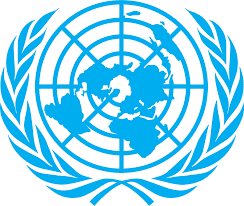APA – Lagos (Nigeria)
The global production of cocaine has jumped dramatically over the past two years following an initial slowdown caused by the COVID-19 pandemic, according to a new report released today by the United Nations Office on Drugs and Crime (UNODC).
The Global Report on Cocaine 2023 details how coca cultivation soared 35 per cent from 2020 to 2021, a record high and the sharpest year-to-year increase since 2016. The rise is a result of both an expansion in coca bush cultivation and improvements in the process of converting coca bush to cocaine hydrochloride.
According to the report distributed by APO Group on behalf of United Nations Information Service Vienna (UNIS), the steep growth in supply has been matched by a similar swelling in demand, with many regions showing a steady rise in cocaine users over the past decade.
While the cocaine market remains quite concentrated in the Americas and parts of Europe, the report warns that there is a strong potential for a large expansion in Africa and Asia.
Nevertheless, interceptions of cocaine shipments by law enforcement around the world have also risen sharply, with seizures reaching a record high of nearly 2,000 tons in 2021.
“The surge in the global cocaine supply should put all of us on high alert,” stated UNODC Executive Director Ghada Waly in reacting to these findings. “The potential for the cocaine market to expand in Africa and Asia is a dangerous reality. I urge governments and others to closely examine the report’s findings to determine how this transnational threat can be met with transnational responses based on awareness raising, prevention, and international and regional cooperation.”
It added that the report examined the emergence of new hubs for cocaine trafficking, noting that countries in Southeastern Europe and Africa – particularly those in West and Central Africa – are increasingly being used as key transit zones for the drug. Ports on the North Sea like Antwerp, Rotterdam, and Hamburg, meanwhile, have eclipsed traditional entry points in Spain and Portugal for cocaine arriving in Western Europe. Traffickers are also diversifying their routes in Central America by sending more and more cocaine to Europe, in addition to North America.
The modalities of cocaine traffickers are also examined in the report, with findings showing that the criminal landscape is fragmenting into a myriad of trafficking networks. The demobilization of fighters from the Revolutionary Armed Forces of Colombia (FARC) – who had previously controlled many of Colombia’s coca-growing regions – created an opening for others to step in, such as new, local actors; ex-FARC guerillas; or even foreign groups from Mexico and Europe. Additionally, the report reveals that so-called “service providers”, i.e., specialized groups that lend their services at all stages of the supply chain for a fee, have proliferated.
“With its latest knowledge and trends on the routes, modalities, and networks employed by criminal actors,” noted Angela Me, chief of the Research and Analysis Branch at UNODC, “it is my hope that the report will support evidence-based strategies which stay ahead of future developments in cocaine production, trafficking, and use.”
GIK/APA


